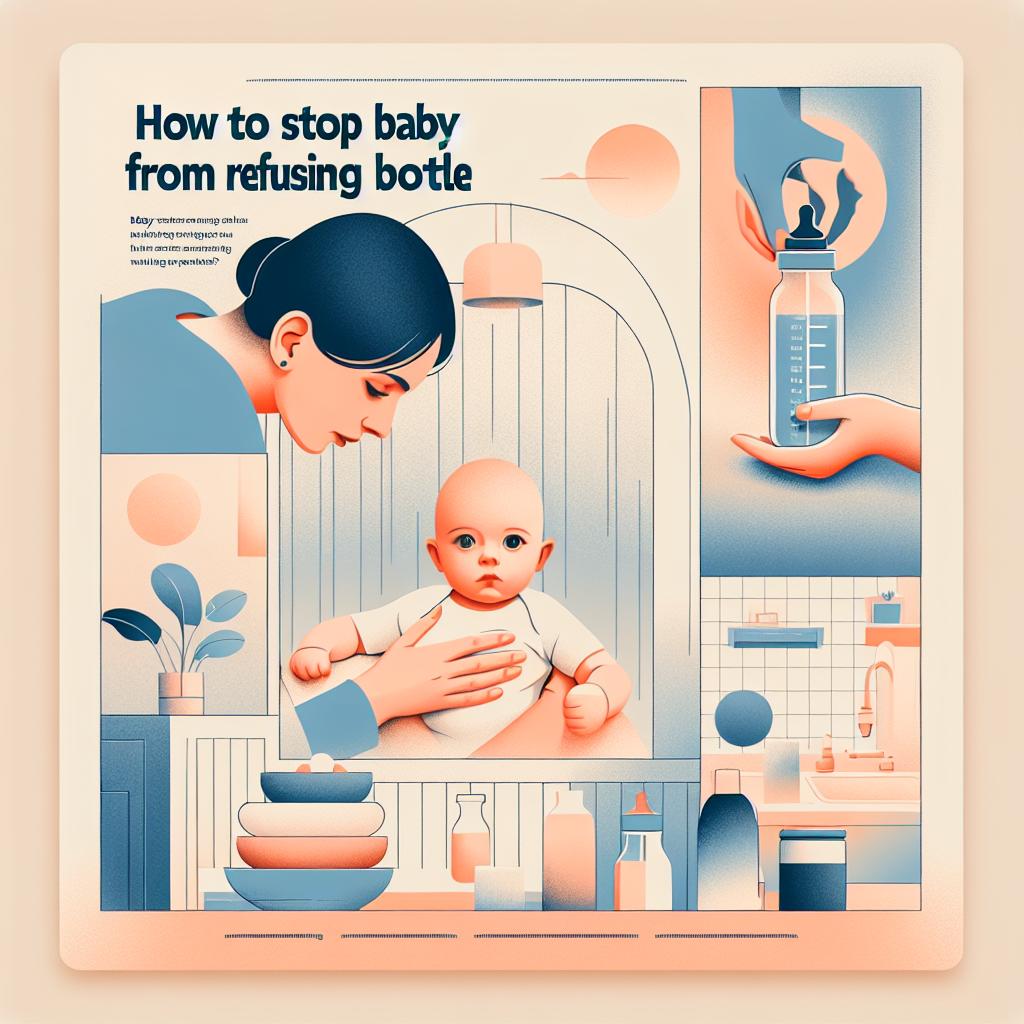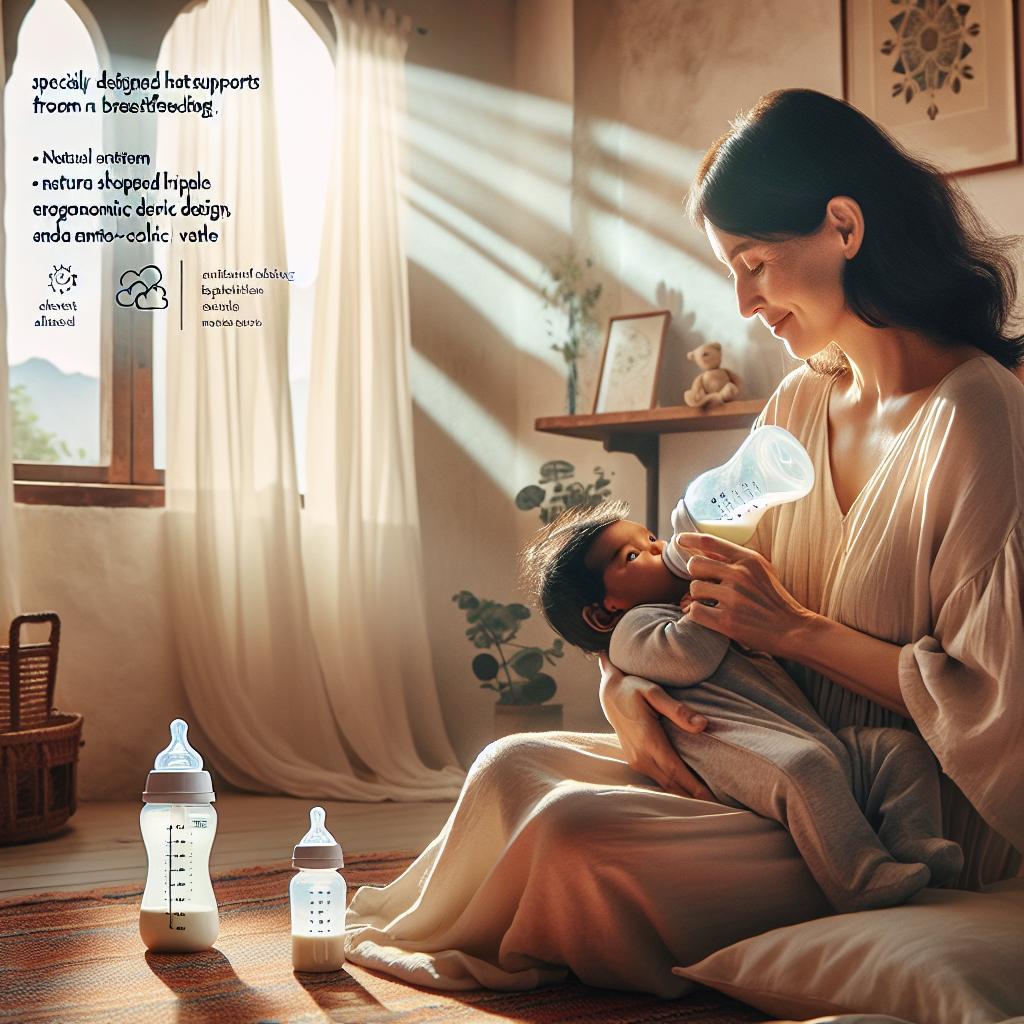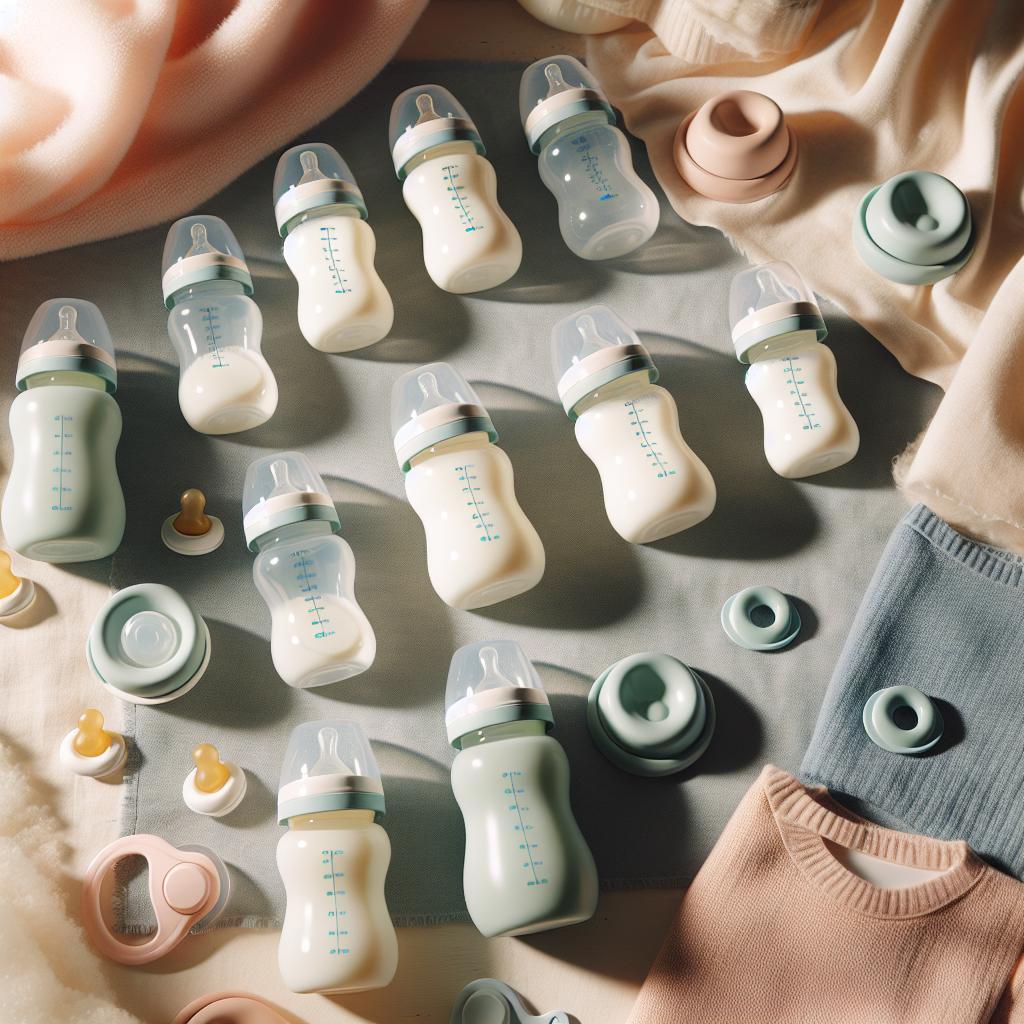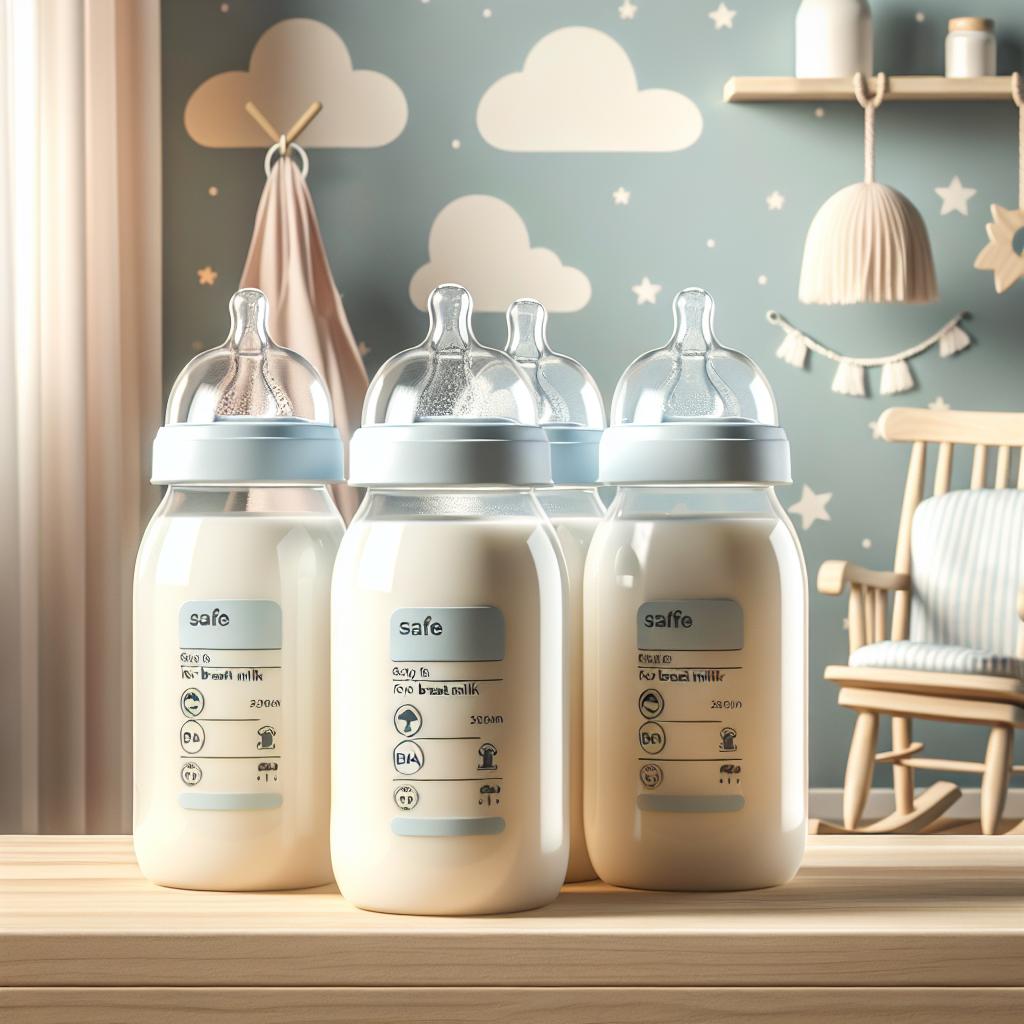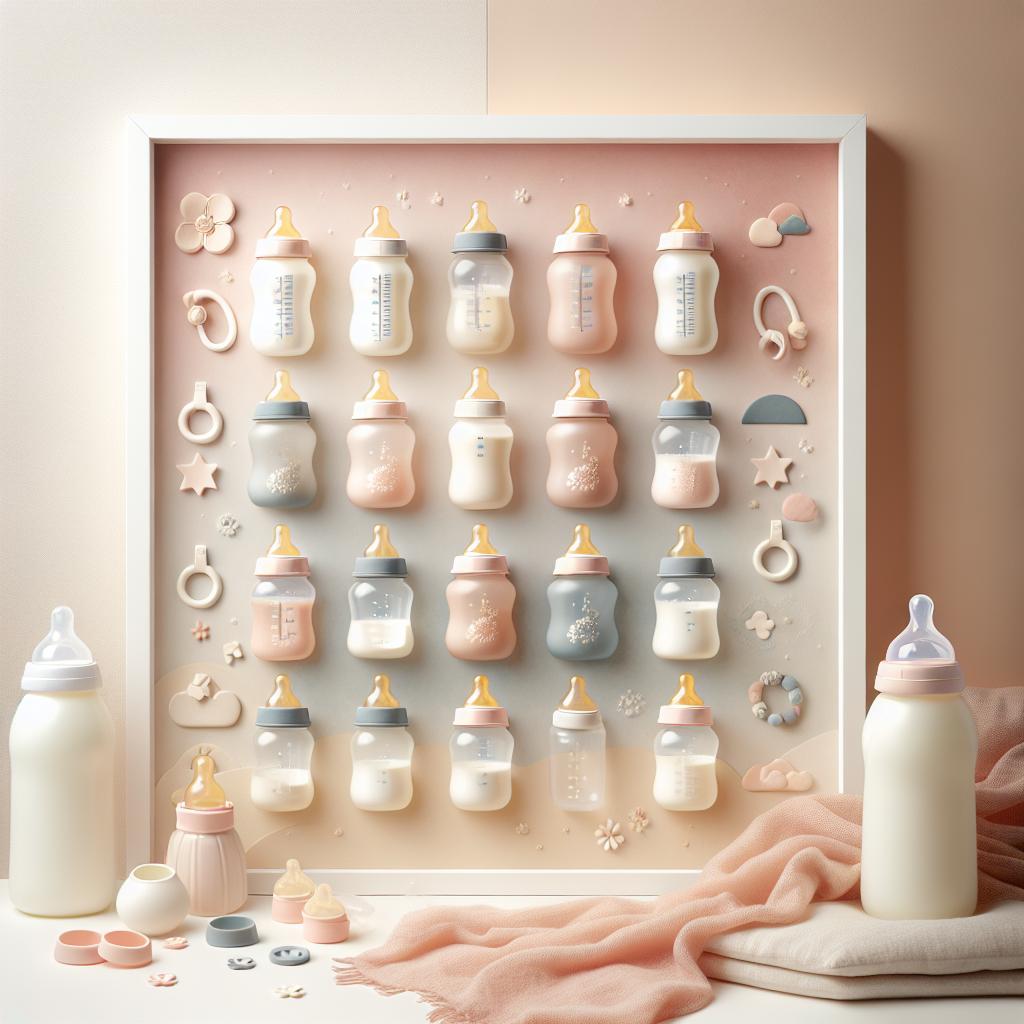Recognising Bottle Readiness
Many parents wonder when their baby is ready for bottle feeding, if and when the time comes to shift from breastfeeding. The transition from breast to bottle can be a unique experience for every child. Understanding the signs that your baby is ready for a bottle will aid in a smoother transition for both of you.
Signs Your Baby is Ready for Bottle
While every child is different, there are common signs to look out for indicating that your baby is ready for bottle feeding:
- Frequently hungry: If your baby seems to be hungry more frequently than usual, this might be a sign they are ready for a bottle. This could be because they’re not getting enough milk from breastfeeding, which is common as babies grow and their dietary needs increase. Learn more about this on NHS website.
- Focused on solid foods: When your baby shows a serious interest in solid foods, this can be an indicator that they may also be ready to move to bottle feeding. More information about introducing solids can be found on raisingchildren.net.au.
- Have the ability to hold their own bottle: As your baby becomes more independent and develops better hand-eye coordination, they may begin to show interest in holding their own bottle. This is one of the clearest signs your baby is ready for bottle feeding. Check out Healthline for more about this milestone.
Choosing the Right Bottle
Once your baby shows signs of bottle readiness, the next step is to find the right bottle that will make the transition easier and comfortable for your infant. Here at Biomimetic Bottles, we offer a range of options specially designed to mimic the breastfeeding experience, making the transition smoother while ensuring your baby’s comfort and feeding efficiency.
For example, our range includes bottles for mixed feeding that are perfect for babies transitioning from breastfeeding. You can learn more about these bottles on our website.
Transition Tips
Moving from the breast to the bottle can be a huge shift for both mother and baby. Here are a few tips to help make the transition smoother:
- Start slow: Transitioning to the bottle does not have to happen overnight. You can slowly introduce bottle feeds, starting with one bottle feed a day and gradually increasing.
- Stay patient: It’s natural for your baby to resist bottle feeding initially. Let them hold the bottle, play with it and get comfortable before you truly start feeding.
- Mixed feeding: If your baby is not ready to completely switch from breast to bottle, mixed feeding can be an excellent solution. Check out more on this in our post on the best bottle for mixed feeding.
Ultimately, the transition from breast to bottle is a personal journey for every mother and baby. Recognising when your baby is ready for a bottle can make this journey smoother and less stressful for everyone involved.
Finding the optimal bottle flow rate
After establishing that your child is ready for the bottle, you also need to find the right flow of the bottle. This will greatly impact the feeding efficiency, comfort, and safety of your baby. An important factor to consider here is that nipples for bottles come in a wide array of flow rates, from slow to fast. The flow rate designated is based on how quickly milk comes out when the bottle is turned upside down.
Typically, newborns start with a slow-flow bottle, which gives formula or breast milk slowly as they learn to bottle-feed. As they age, their feeding improves and they are capable of managing faster flow rates. You can discover more information about the importance of finding the right bottle flow rate, as explained by pediatric health experts at Nationwide Children’s hospital .
How to Determine if Your Child is Hungry
Understanding when your child is hungry can make the bottle feeding transition less stressful. Your baby will provide signs when they are hungry or full. These signs can include opening their mouth, making sucking motions, or putting their hands towards their mouth when hungry, while turning away, becoming distracted during a meal, or slowing down or stopping eating when they are full. For a more detailed list of potential hunger and satiation cues provided by CDC , click the link.
Risks of Putting Rice Cereal in Your Baby’s Bottle
Some parents may feel tempted to put rice cereal in their baby’s bottle to help them sleep longer or fill them up more. However, the American Academy of Pediatrics advises against introducing rice cereal before 4 to 6 months of age. There are a few reasons for this, primarily that adding rice cereal to your baby’s bottle can cause unnecessary weight gain and decreased milk consumption. More importantly, early introduction of solids may increase your baby’s risk for some chronic diseases. You can read more about the risks associated with adding rice cereal to your baby’s bottle on WebMD.
Dealing with Weaning
Weaning is a continuous process and it often begins with bottle feeding. Once your child has adapted to bottle-feeding, you may find that weaning off the bottle onto a cup begins naturally. However, not all children react the same way and sometimes they need a little encouragement to give up their bottle. Following an earlier point, allow your child to adjust at their pace, and remember to be patient. Some useful advice about weaning your child off a bottle can be found on KidsHealth.
Remembering that every mother and baby are different
It’s key to remember that every child is unique and will react differently to bottle-feeding. As such, pace yourself, be patient, and monitor your child’s progress. Knowing the signs your baby is ready for a bottle will help make the transition easier for both of you.
In Summary
Recognising when your baby is ready for a bottle aids in smoother transition from breast to bottle. Be mindful of heeding the signs of readiness from your baby, choosing a bottle carefully, as well as taking appropriate transitioning tips into account. Our selection at Biomimetic Bottles, coupled with resources from nationwide health institutions, can provide vital assistance in this journey of infancy.

